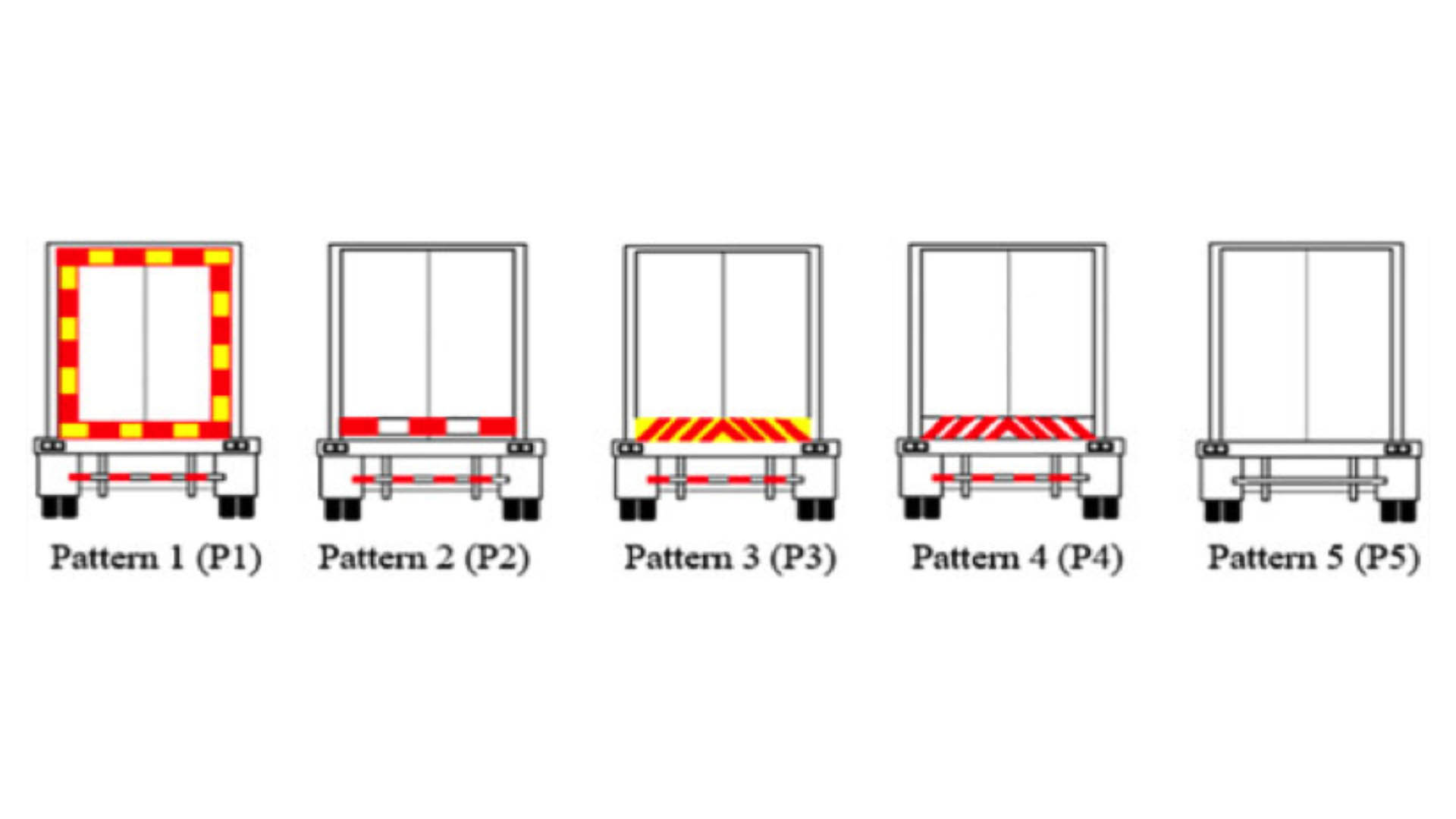As mentioned before in our preceding segment and in a bid to highlight the problem even further, there is very little research on the causes of truck related RTAs in Kenya. This is partly due lack of research into these types of incidents and inadequate media focus on the causes of the accidents.
Despite the dearth of research in this area, it does not hinder our insight as to the seriousness of this issue as relevant research in other jurisdictions such as Germany has shown that nearly 5% of fatal truck crashes are attributable to poor visibility of the truck or its trailer at night.
These research findings are in line with the alarming rate of so-called important and famous individuals involved in these severe car-truck accidents which point to the huge number of unreported similar cases.
This association between visibility of heavy commercial vehicles at night and RTAs was noticed in other African Countries as well as for example in Zambia where the Zambian Traffic Directorate enacted regulations known as Road Traffic (Marking) Regulations, 2009, as a subsidiary legislation to their Road Traffic Act, to provide for the use of retro reflective strips on heavy vehicles or trailers.
Available Legislation on Retro-reflective Strips in Kenya
a) The Traffic Act
The Traffic Act is an Act of Parliament enacted in 2012 and meant to consolidate the law relating to traffic on the roads. This Act inter alia provides for the mode of registration of vehicles, licensing of vehicles and drivers and the general provisions to ensure maintenance of the necessary standards on our roads.
This Act is however silent on the use of both retro-reflective sheets. However, they are covered under its subsidiary legislation as seen below.
b) The Traffic Rules
The Traffic rules are in place to complement the Traffic Act and contain detailed and specific rules regarding the various standards to be maintained on our roads.
Rule 25 of the Traffic Rules state:
This section provides as follows on the use of retroreflective sheets on heavy vehicles:
- Reflectors and warning signs
(1) In addition to the lamps required or permitted to be carried on vehicles under these Rules, reflectors and warning signs shall also be carried as follows—
-
-
- …
- …
- on a heavy vehicle, or on a trailer having a tare weight exceeding 225 kilograms—
-
-
-
- at the front—a warning sign consisting of a continuous strip of white reflective material not less than 5 centimetres wide, mounted on a metal panel facing in a forward direction extending horizontally for such distance as is necessary to indicate the overall width of the vehicle, or to within 30 centimetres on either side thereof, and so placed that the lower edge of such sign is not less than 30 centimetres and the upper edge not more than 120 centimetres above ground level;
- at each side of the rear—a warning sign conforming to the dimensions and details set out in Part III of the Tenth Schedule mounted on a metal panel so placed that the lower edge of the sign is not less than 60 centimetres and the upper edge not more than 150 centimetres above ground level, and the outer edge is not more than 15 centimetres from the side of the vehicle;
-
The Seventh Schedule of these Rules, in compliment to the above Rule also contains the drawings as to where and how the rule should be complied with by heavy vehicles with the Tenth Schedule providing for the specifications as to the color of the reflective material, its dimension and rules as to the maintenance of the same in optimal condition to ensure fitness of purpose.
This Rule rightfully mandates the installation of the reflective sheets to improve visibility. However, no mention is made as to the enforcement of the same and the sanctions available for breach of this Rule.
c) The NTSA Act
The NTSA Act is an act of Parliament that provides for the establishment of the National Transport and Safety Authority (NTSA); to provide for the powers and functions of the Authority, and for connected purposes. It gives mandate to the NTSA to carry out inter alia, the registration and licensing of motor vehicles and drivers as well as the carrying out of inspection of motor vehicles. The NTSA Act also gives power to the NTSA to revoke any licenses upon breach of the standards set forth in the Traffic Act and Rules as well as the NTSA Act and Regulations.
d) The NTSA Regulations
Passed in 2018, the NTSA Regulations bring to life the rules and laws set out under the NTSA Act. In relevance to the measures proposed herein, there is no mention of the proposed rear, front and side metal bars to prevent underride.
However, Rule 9 of these Regulations provides:
(1) A commercial vehicle shall be required to have Retro-reflective contour markings that conform to the standard KS 1820: contour markings for commercial Kenya Subsidiary Legislation, 2018 7 2005, that identify as close as possible the entire length and width of vehicles and the motor vehicle when viewed from the front, side or rear as illustrated trailers. in the Third Schedule.
(2) The minimum width of the retro-reflective contour markings should be two inches.
As can be seen above, the Regulations adequately provide for the use of retro-reflective markings on commercial vehicles and even specifies the manner in which the same should be installed specifying the same as standard KS 1820.
Just like in the traffic rules, there are no sanctions imposed on the failure to install the same.
Use of Retro-reflective strips in other jurisdictions to increase visibility

a) United States
In 1969, the National Highway Traffic Safety Administration (NHTSA) issued Federal Motor Vehicle Safety Standards (FMVSS) Number 108 which required the fitting of horizontal red and white reflective tape along the lower rear of heavy trucks to increase visibility.
The implementation of this requirement has helped greatly reduce the number of visibility accidents in the United States by 58% since its introduction. This safety standard also requires that the retroreflective sheet contain an indication that the sheet conforms to the authorized standard.
This standard also specifies that the sheet shall employ alternating red and white colour patterns in equal measure and goes on to specify the width and equally the placement of these sheets to increase conspicuity.
b) Canada
Just like the FMVSS 108, 11 the Canada Motor Vehicle Safety Standard – CMVSS 108 – Lighting Systems and Reflective Devices regulates all lighting and reflective systems in Canada. The two are identical in purpose, regulating all the lighting and reflective system requirements for all motor vehicles.
It too requires the placement of red and white color pattern tape at the bottom of the rear end of the truck. The CMVSS as well requires the self-regulating mechanism of placement of certification markings on the sheets to ensure that they conform to the national acceptable standard.
c) United Nations Economic Commission for Europe (UNECE) Regulation 48
This is a safety standard that was proposed by the World Forum for Harmonization of Vehicle Regulations combination of red and yellow retro-reflective tape placed horizontally and vertically on both the right and left upper and lower rear sections of trucks following Regulation No.48 from UNECE.
This Regulation was adopted as part of the 1958 Agreement in which member states proposed uniform technical propositions for motor vehicles for approval. When an item is considered as a regulation in one country the approval is accepted by all participating countries.
The United States and Canada through the enactment of their own standards as discussed above, pulled out of the 1958 Agreement and by virtue of their pull out from this Agreement, all trucks and semitrucks imported into their country require conformity with the FMVSS and the CMVSS respectively.
Difference is safety standards as seen from the three jurisdictions
The United States and Canada safety standards on the use of retro-reflective sheets is similar but different from the one proposed by the United Nations. The FMVSS and CMVSS require the placement of red and white reflective color marks on the rear end of the trucks. The UNECE standard requires the placement of red and yellow color marks on the top, rear and sides of the back of heavy vehicles.
This is demonstrated as in the Figure below:

P1 represents the UNECE standard while P2 represents the FMVSS and CMVSS standard. P3 and P4 are the ones adopted in Thailand and Britain respectively. P5 represents a test experiment and may be used here to represent the standard currently applied in our country.
A recent study comparing these three-color patterns showed that the United Nations standard was the most effective for ensuring conspicuity of trucks in all weather conditions, during all times of the day and across different age groups.
Here in Kenya, we could adopt the same all-round placement of the red and yellow tape on both the side and the rear of heavy vehicles. This would require an amendment of the current laws on retroreflective materials for heavy vehicles.
Implementation and Enforcement of the Law as the problem and solution
As mentioned by Chitere and Kibua in their article, “Efforts to Improve Road Safety in Kenya: Achievements and Limitations of Reforms in the Matatu Industry,” road fatalities are not only due to lack of road safety regulation but the poor enforcement of the regulations.
It is a saying of the wise that the solution to anything lies buried deep within the problem. It is clear that there is very little focus by our NTSA and even the Police in enforcement of this rule as can be seen by the continual rise of cases of similar accidents caused by lack of conspicuity of trucks at night.
Although our law clearly specifies the less preferred red and white colour pattern, the same has not yet been fully implemented to start with. We therefore propose that since the legislation is already in place, what remains is enforcement of this rule.
This can be done as in the European Countries where the proper fitting of these sheets on heavy vehicle is a prerequisite to the licensing and registration of these vehicles. This way, only heavy commercial vehicles with the retro-reflective strips installed as prescribed in the law ever make it onto the roads.
This rule could be made applicable to all heavy commercial vehicles manufactured or imported into the Country from a certain date as prescribed by Parliament to ensure that only vehicles which meet this standard are on Kenyan roads.
Here in Kenya, we have a workable system of registration and licensing of heavy vehicles. The same is under the mandate of NTSA which has the authority to issue and revoke commercial vehicle licenses based on non-conformity to the legal standards. By setting the requirement of installation of retro-reflective strips as a standard, the same will be set as a safety requirement to be noted in inspection reports carried out before registration and licensing of commercial and heavy vehicles.
With regard to the already registered and operating vehicles, NTSA, through policy, could order for the mandatory compliance with Rule 25 of the Traffic Rules, as read together with Regulation 9 of the NTSA Rules.
Enforcement through Sanctions
As seen hereinbefore, there are no sanctions on the failure to comply with Rule 25 of the Traffic Rules. To highlight this lacuna, the Traffic (Minor Offences) Rules, 2016 which are aimed at enforcing Rule 25 of the Traffic Rules provide that the fine ascribed to Rule 25 for failure of a vehicle to carry reflective/warning signs (lifesavers) is KES 3,000/-.
The lawmaker clearly regulated the use of retro-reflective sheets, carrying of warning signs and triangles on heavy vehicles to be displayed to avoid obstruction. He however forgot to regulate the use of these retro-reflective sheets on these vehicles and provide a fine when the same is breached.
We therefore propose that the imposition of sanctions for Rule 25 of the Traffic Rules and Rule 9 of the NTSA Act may be either done by:-
- the enactment of Traffic Rules specifically governing the offenses relating to the failure of heavy vehicles to display retro-reflective sheets as was seen in the enactment of new rules for speed governors for heavy commercial vehicles pursuant to Rule 41 of the Traffic Rules; or
- the simple approach of amendment of the Traffic (Minor Offences) Rules, 2016 to include sanctions for failure to comply with the Rules on retro-reflective signs.
Visit the Gerivia Advocates LLP Website to read related articles from the Gerivia Road Safety Series and other articles in our other areas of practice.




